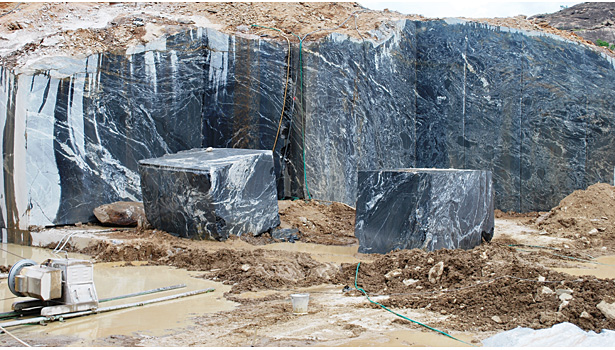Discovering the Rich History and Sustainable Practices of Granite Quarrying
As we stand on the precipice of discovering the elaborate tapestry of granite quarrying, a trip through time exposes not simply the physical act of removing stone but also the social and historical value woven into the very fabric of this practice. From the ancient beginnings that laid the foundation for contemporary quarrying strategies to the sustainable techniques that are forming the future of this sector, each carve mark on granite surfaces narrates waiting to be unearthed (granite quarries in south africa). The legacy of granite quarrying extends far beyond mere removal; it is a testimony to human ingenuity, durability, and the enduring attraction of this impressive stone
Old Beginnings of Granite Quarrying
Going back to ancient people, the method of quarrying granite has actually been an essential part of human history and architectural development. The earliest evidence of granite quarrying dates back to old Egypt, where huge pyramids and elaborate sculptures were crafted from this durable rock. The Egyptians utilized primitive tools to draw out granite blocks from quarries, showcasing the importance of this material in their monumental buildings.
Progressing in background, the Greeks likewise made substantial payments to the quarrying of granite. The Greeks made use of granite in numerous building wonders, such as holy places and sculptures, showing their skill in shaping and carving this sturdy stone. The Romans even more fine-tuned the strategies of quarrying granite, using innovative tools like chisels and hammers to extract and shape granite for their iconic structures.
Through the centuries, the technique of quarrying granite has actually developed, with contemporary innovations improving performance while maintaining the ageless allure of this natural rock - granite quarries in south africa. From old human beings to modern builders, the legacy of granite quarrying remains to form our globe
Development of Quarrying Methods
The development of quarrying methods has actually been marked by a constant progression towards greater efficiency and precision in extracting granite. From the simple approaches utilized by our ancestors to the advanced modern technologies used in contemporary quarrying operations, the industry has actually undertaken considerable advancements. Early quarrying methods involved hand-operated labor with standard devices such as knives, hammers, and wedges to remove granite blocks from the earth. As civilizations progressed, strategies like fire-setting and primitive dynamites were introduced to facilitate the removal process.
Improvements in computer-controlled devices and 3D modeling have optimized quarrying procedures, leading to marginal ecological impact and enhanced sustainability techniques. As the demand for granite continues to climb, the development of quarrying techniques continues to be integral to meeting industry needs efficiently and sustainably.
Cultural Importance of Granite
Granite holds a profound cultural value throughout various worlds due to its enduring visibility in building work of arts and revered monoliths. From the magnificent pyramids of Egypt to the elaborate carvings of the Angkor Wat holy place in Cambodia, granite has actually been a product of choice for expressing majesty and check it out long life in social heritage. In ancient Rome, granite columns adorned temples and public structures, representing stamina and permanence. The social relevance of granite extends beyond its physical qualities; it symbolizes durability, security, and eternity, making it a sign of sustaining legacies and practices.

Sustainable Practices in Quarrying
Among the rich history of granite quarrying and its cultural significance exists a growing focus on sustainable techniques within the market. As environmental recognition and worries regarding resource depletion have actually increased around the world, the quarrying market has significantly accepted lasting approaches to lessen its influence on the atmosphere and bordering areas.

Moreover, reclamation and rehab of quarry websites post-extraction are indispensable to sustainable methods. By restoring quarried locations to a natural try here or beneficial state, such as producing wildlife habitats or leisure areas, quarriers can balance out the environmental footprint of their procedures and add positively to the regional ecological community.
Heritage of Granite Quarrying
With a historic backdrop soaked in workmanship and commercial progression, what sustaining effect has granite quarrying left on the landscape of contemporary society? The heritage of granite quarrying transcends simple removal practices; it has actually shaped building marvels, urban landscapes, and cultural heritage worldwide. The resilient nature of granite has actually made it a preferred selection for monoliths, buildings, and facilities, standing as a testament to the skill and virtuosity of quarry workers across generations.
Moreover, the financial footprint of granite quarrying can not be overlooked. The market remains to provide work possibilities and drive neighborhood economic situations in areas where granite extraction is prevalent. It has actually also stimulated technological advancements in quarrying strategies and devices, bring about much more reliable and lasting practices.
In regards to sustainability, the heritage of granite quarrying includes efforts to alleviate environmental impacts with reclamation jobs and accountable source monitoring. By stabilizing economic interests with environmental stewardship, the industry aims to make sure that future generations can remain to take advantage of this enduring natural deposit.
Conclusion
